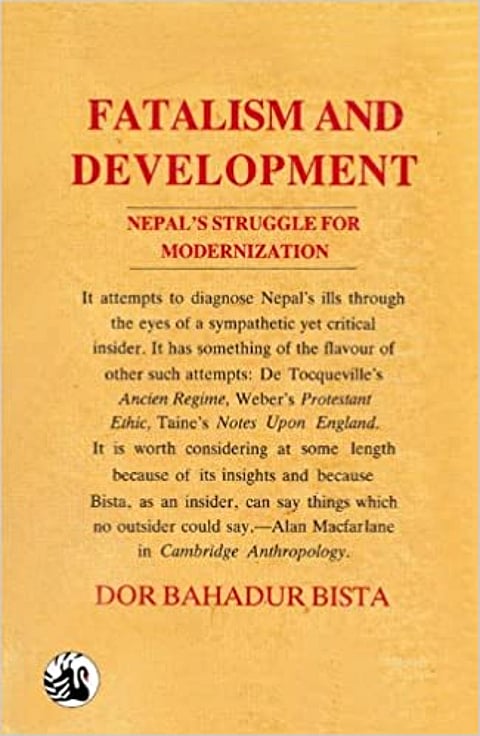Underdevelopment is a complex phenomenon. One of the promises of Dor Bahadur Bista´s book is that some of this complexity with regard to Nepal may be understood from die point of view of a native anthropologist of proven sensitivity and understanding of Nepali society and culture. What one gets from Fatalism and Development, however, is truly a mixed bag.
The book is a remarkable collection of valuable insights, pointed and accurate criticism, sympathetic and liberal portrayal of the Nepali under-classes, jumbled together with common and unoriginal descriptions, faulty and often-spurious analyses, out-dated development theory, and, unfortunately, myriad stereotypes and clichés about non-Western societies. The book´s virtues, as well as its failings, derive from this essentially schizophrenic mould.

